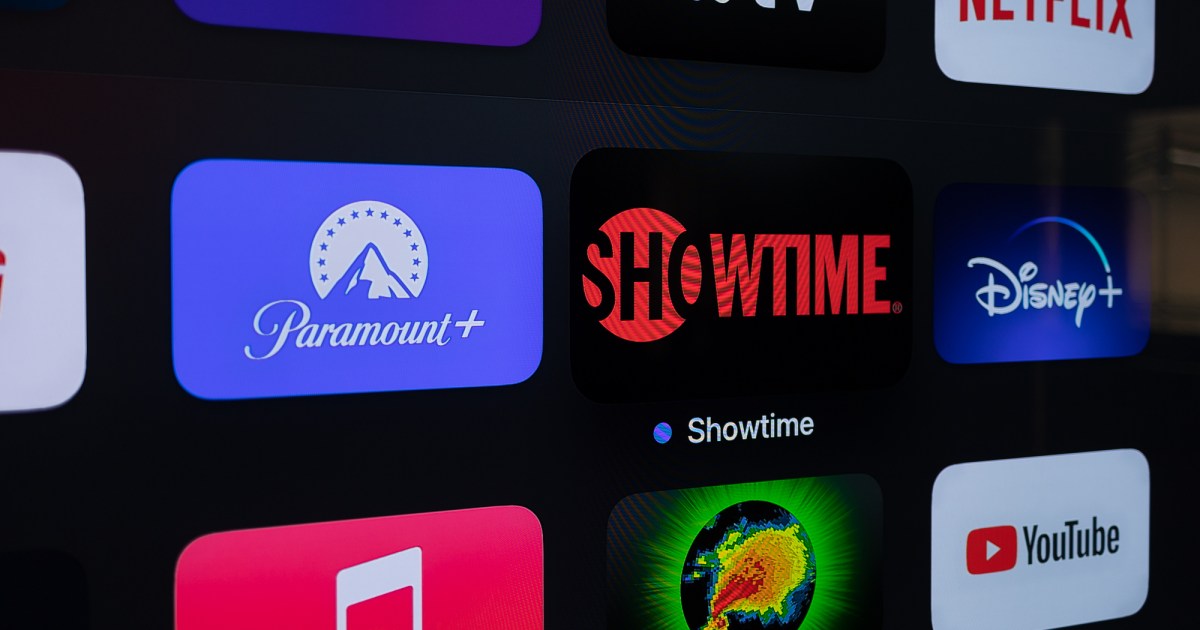Is the Samsung Galaxy S25 Ultra worth an upgrade if you own the last Ultra phone? Equally, if the Galaxy S25 Ultra is on your buy list, understanding how Samsung has improved the camera this time around will be an important point to understand before splashing out on it. To help answer these questions, we put Samsung’s latest Ultra phone against its predecessor, the Galaxy S24 Ultra, in a serious camera battle.
Camera specs
The first thing to understand is not much has changed on the hardware front. Both have a 200-megapixel main camera with an f/1.7 aperture, phase-detection autofocus (PDAF) and optical image stabilization (OIS). It’s joined by a pair of telephoto cameras on both, one 10MP telephoto with OIS for a 3x optical zoom, and another 50MP telephoto with OIS for a 5x optical zoom.
The single hardware change is the wide-angle camera, which is a 12MP camera on the Galaxy S24 Ultra and a new 50MP wide-angle on the Galaxy S25 Ultra. The new wide-angle camera has an f/1.9 aperture compared to the f/2.2 on the S24 Ultra, while both have the same 120-degree field of view.
Inside each phone is a different processor, which can have a considerable impact on the photographic experience. The Qualcomm Snapdragon 8 Gen 3 powers the Galaxy S24 Ultra, and it’s the latest Snapdragon 8 Elite inside the Galaxy S25 Ultra. Both chips have been optimized “for Galaxy,” which Samsung says improves overall performance.
Main camera
There is very little to split the Galaxy S25 Ultra and Galaxy S24 Ultra’s main cameras, but there are two things you need to know before deciding whether to upgrade. The tiny differences in tone, color, and dynamic range will be split by personal preference, as one isn’t better than the other, but I’ve continuously noticed the Galaxy S24 Ultra’s main camera takes sharper photos with a wider focal area.
The front of the church is a great example. Take a close look at the windows on the building deeper in the frame than the entrance, and you’ll see the S25 Ultra introduces blur where the S24 Ultra’s photo is pin sharp. It’s evident elsewhere in the photo too, but because you have to look really closely, it won’t bother everyone. However, it detracts from the overall photo once you’ve seen it.
The Galaxy S25 Ultra can redeem itself with less noise, which can be seen in the photo of the street, specifically under the awning and through the window. Lets finish with a photo that shows the differences as a whole. The Firebird sign and sky in the photo below has better white balance in the S25 Ultra’s photo, but isn’t as sharp as the S24 Ultra’s picture, and although the contrast is well-judged in the S25 Ultra’s photo, I prefer the color pop in the S24 Ultra’s photo.
It’s very difficult to say one is better than the other, as some won’t notice the differences at all, and both do have positive and negative points. I wouldn’t rush to upgrade the S24 Ultra to the S25 Ultra, but I also wouldn’t hold back on the S25 Ultra over any concerns the camera is somehow worse. The main camera category is a draw.
Winner: Draw
Wide-angle camera
Now we come to the category where the Galaxy S25 Ultra should beat the S24 Ultra. Out test against the Apple iPhone 16 Pro Max has already shown the wide-angle camera takes good photos, so how does it do next to the Galaxy S24 Ultra? Anyone expecting dramatic differences is going to be a little disappointed.
The wide-angle photo of the church shows you have to look very closely to spot any differences at all, and even when you do, they’re negligible. There’s a bit less noise in the S25 Ultra’s photo, but more pop in the S24 Ultra’s photo, and both have an almost identical level of detail. Neither photo is better than the other.
The Galaxy S25 Ultra’s wide-angle camera is a little better in low light. In the shot of the cabinets inside a cafe, there’s markedly less noise and edge blurring at the top of the S25 Ultra’s photo, and the white balance is more accurate too. However, if I didn’t tell you about these differences, would you actually notice?
Here’s a test for you. Which wide-angle photo out of the two above do you prefer? The Galaxy S25 Ultra’s wide-angle camera takes sharper photos, but it’s really marginal, and I’m not convinced it makes that much of a difference. Both photos are technically quite similar, with no obvious negative points. Yes, the Galaxy S25 Ultra’s wide-angle camera is “better” than the S24 Ultra’s, but whether you will ever notice is another thing entirely. It gets the win, but don’t read too much into it.
Winner: Samsung Galaxy S25 Ultra
Telephoto cameras
Finally, as we reach the telephoto category, we can see some consistent improvements in the photos taken by the Galaxy S25 Ultra. Across the 3x, 5x, and 10x zoom the S25 Ultra takes sharper and less noisy photos than the S24 Ultra, and you don’t always need to pixel-peep to see the changes.
The 3x zoom photo of the archway is the hardest to immediately see the changes, but the wooden archway and gate do have more sharpness and texture when you take a moment to examine the photo. This continues into the background. I do prefer the S24 Ultra’s visual pop though, a running theme throughout the test.
The photo of the cat was taken at 5x zoom, and the Galaxy S25 Ultra has nailed the color of its coat, and lessened the intense contrast of the S24 Ultra’s image, giving it a natural look and tone. There’s a lot less noise in the background too.
Finally, the clock at 10x zoom shows how much the S24 Ultra relies on smoothing to keep noise at bay. The textures in the stone around the edge of the clock face are sharper in the S25 Ultra’s photo, and there’s a lot less pixelation in the darker sections at the top of the image. The Galaxy S25 Ultra’s three primary zoom levels easily surpass the quality of the S24 Ultra’s cameras.
Winner: Samsung Galaxy S25 Ultra
30x and 100x zoom
More for fun than anything else, here’s how things have changed for the 30x and 100x zoom levels both phones can achieve. Interestingly, the 30x zoom is getting more and more usable, with far less smoothing, more sharpness, and additional texture to make the 30x photos taken by the Galaxy S25 Ultra much improved over the S24 Ultra.
The 100x zoom photos still aren’t ones you’d take and want to keep, but similar updates to the 30x mode make them less artificial looking than before, with more texture and realism. It’s advancements made in the software and processing which make all this possible, rather than the camera hardware, and it’s perhaps the area where we can see the most obvious changes between the two phone generations.
Winner: Samsung Galaxy S25 Ultra
Night mode
The software and processing improvements extend to the Galaxy S25 Ultra’s lowlight performance too. The first photo was taken in practically dark conditions, with ambient light coming from a security lamp behind me. The S25 Ultra’s photo is sharper, and makes better use of the contrast and exposure time to make the scene look more natural, and bring out more of the textures in the wood.
The next two photos show the S25 Ultra’s greater ability to take a natural looking photo in lowlight. The first has plenty of ambient light, but it was nowhere near as green as the S24 Ultra makes it seem, but there’s a lot less noise in the photo due to its additional smoothing. However, textures are greater and more realistic in the S25 Ultra, such as on the tarmac and the tree trunk.
All this is then emphasized in the photo of the same scene taken from a different angle. The S25 Ultra’s colors are much more accurate, and there’s less blur on the vehicles too. However, it’s less effective at capturing the text on the van, and both photos have noisy skies. When the Galaxy S25 Ultra is this effective in very lowlight, it’ll suit more environments than the S24 Ultra.
Winner: Samsung Galaxy S25 Ultra
An easy win
The Samsung Galaxy S25 Ultra has beaten the S24 Ultra in all but one category, with the telephoto sections proving to be the most decisive. The new wide-angle camera is obviously improved, but it’s not as dramatic as you may expect. However, I have been really impressed with it outside of this test piece, and you can see more examples of the photos it takes in our review.
It’s no surprise the two main cameras are equally matched as the hardware is unchanged, but I remain concerned about the introduction of blur and a lack of sharpness. I don’t think this should happen on a camera attached to a $1,300 smartphone, and look forward to Samsung addressing it in future software updates.
While the Galaxy S25 Ultra has won this test, it’s hard to say it provides a compelling reason to upgrade if you own the Galaxy S24 Ultra, unless you use the telephoto cameras a great deal. It’s not like the S24 Ultra has a bad camera, as it still managed to beat the iPhone 16 Pro Max at the end of 2024. We’ve got some other interesting tests if you’re still considering the S25 Ultra, as we’ve also put it against the iPhone 16 Pro Max, and we’ve got an in-depth look at how the telephoto capabilities compare to its rivals here.




































